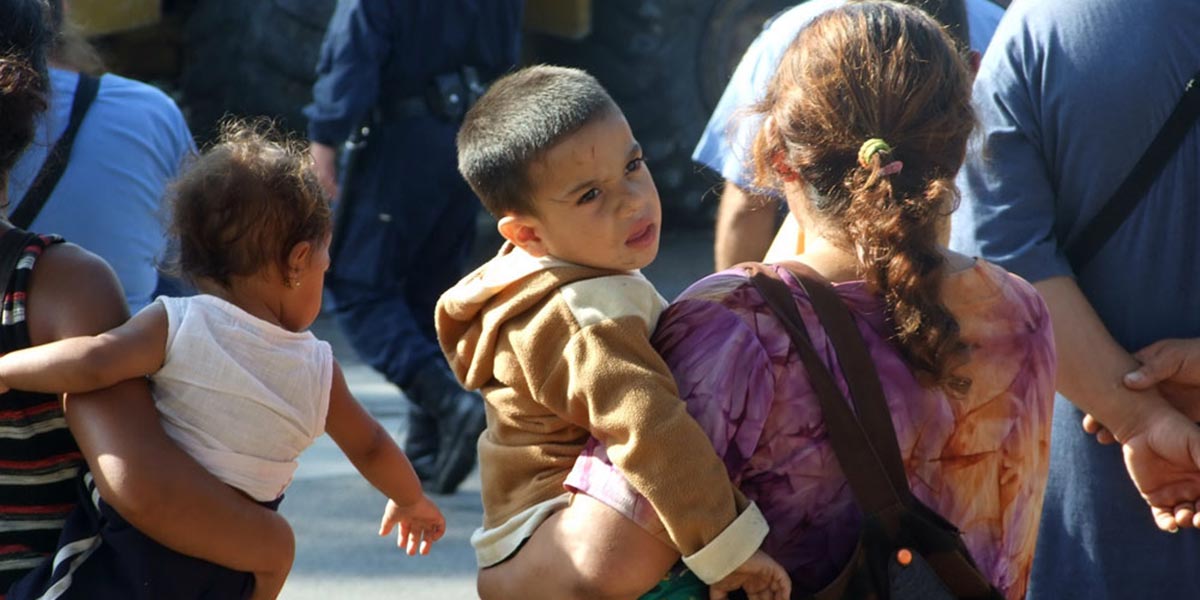Gazela Bridge rehabilitation, Belgrade, Serbia
The resettlement of about 170 predominantly Roma families that lived below the Gazela Bridge in Belgrade, Serbia is part of a wider project for the reconstruction of a bridge across the River Sava. Although the project is backed by European public money, donor requirements to follow World Bank Group resettlement standards have for a long time been ignored by Belgrade City Council.
This is an archived project. The information here may be out of date.
Learn more about our current projects and sign up for the latest updates.

The resettlement of the Roma community at the Gazela bridge.
Stay informed
We closely follow international public finance and bring critical updates from the ground.
Background
Summary
With a population exceeding one and half million people and an outdated urban plan that is unable to absorb increasing volumes of passengers and cargo transport, Belgrade is facing a critical traffic situation. Plans for a bypass of Belgrade and the rehabilitation of the bridge on the E70/E75 highway crossing have been revived in order to move transit traffic out of the city.
However, serious shortcomings for preventing and mitigating negative environmental and social impacts – specifically resettlement issues – have been recorded during the projects’ assessment process.
Both the European Investment Bank (EIB) and the European Bank for Reconstruction and Development (EBRD) are involved in the project and thus at least indirectly in a resettlement process that includes the discrimination of Roma families who have been threatened, evicted without proper consultation and in many cases resettled to remote places, usually without access to work, and some without sufficient hygienic installations.
Serbian authorities are in danger of repeating the mistakes from Gazela in a new project bearing an uncanny resemblance to Gazela – in an area known as Belvil. And they are again set to receive funding from the EIB and EBRD.
Resettlement went ahead with deficient planning
In August 2009 the predominantly Roma families from the Gazela informal settlement in Belgrade were resettled to temporary accommodation at four sites in Belgrade area. 61 families were sent back to their home towns in the south of Serbia.
Serbian authorities followed a Resettlement Action Plan (RAP) that does not include measures regarding long-term housing, education and employment. Visits to the four sites – Rakovica, Mladenovac, Barajevo, Cukarica – revealed that the living conditions, the access to jobs and to education urgently need to be addressed if the IFIs are to disburse financing and the projects are to go forward.

Stories of displacement
See updates and multimedia content of the displaced families on Bankwatch’s video blog Out of Sight.
Resettlement is not the end of the story
Through dialogue with affected people, city authorities and bank representatives Bankwatch is promoting participatory and transparent consultations on the projects, particularly where resettlement is at stake. These must ensure that resettlement or compensation processes are inclusive and ensure benefits for all project-affected people.
At the least, adherence to the World Bank’s Operational Directive on Involuntary Resettlement, which has been accepted by EIB and EBRD as an operational standard, would mean a step forward in this regard.
In general, much better coordination still needs to be established between the IFIs involved in the projects, the Belgrade city authorities, interested NGOs and the affected population. Sound solutions must be found for resettling and compensating the population.
This solution needs to take into account the real needs, abilities, knowledge and future sustainable life of the affected populations in both of the envisaged resettlements.
Latest news
EIB complaints office confirms shortcomings on Belgrade resettlement
Blog entry | 4 August, 2010After more than three months delay, the Complaints Office of the European Investment Bank recently released its concluding investigations (pdf) into the banks involvement in the resettlement of 175 predominately Roma families from underneath the Gazela bridge in Belgrade.
Read moreNew ‘homes’ in Serbian temporary settlements are still far from acceptable
Blog entry | 20 October, 2009On 31 August 2009 the inhabitants of the Gazela informal settlement in Belgrade were resettled to temporary accommodation at four sites outside of Belgrade. After a visit conducted by partner group CEKOR in September which found a number of important issues needing to be addressed, Bankwatch carried out a follow-up fact-finding mission on 6-8 October 2009.
Read moreRelated publications
How the facts got in the way of a good EBRD Roma headline
Bankwatch Mail | 8 October, 2012 |This summer’s ‘silly season’ featured a a blog post on the EBRD website replete with the claim that the bank has helped turn Serbia into a “role model for social inclusion of Roma”. This claim immediately rang hollow in light of the ongoing plethora of abuses of Roma rights in Serbia.
Serbian shadow report to the UN Committee on the Elimination of Racial Discrimination
Official document | 9 February, 2011 | Download PDFBankwatch’s Serbian member group Center for Ecology and Sustainable Development (CEKOR) has worked together with three Serbian human rights organisations on a shadow report complementing the country’s official statement to the UN Committee on the Elimination of Racial Discrimination. Analysing the legal and factual status of Roma in Serbia, the shadow report draws heavily on examples from the Gazela bridge rehabilitation project in Belgrade.
Conclusion Report by EIB Complaints Office on Bankwatch’s complaint regarding Gazela bridge rehabilitation project Belgrade, Serbia
Official document | 14 July, 2010 | Download PDFThe report confirms Bankwatchs allegations that EIB did not pay sufficient attention during the project assessment: the severe social impact of the project should have led the EIBs competent services to exercise a cautious and targeted social assessment with a view to pro-actively identifying (and therefore promptly addressing) the major social concerns during the appraisal of the projects, while EIB documents do not contain any documental evidence of an appropriate identification of the social issues at stake.
